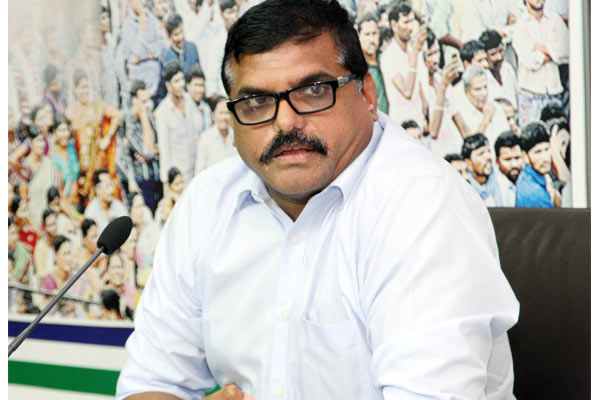Charvaka Ashram – Quaint Ashram For Rationalists In The Heart Of AP Capital

The Charvaka Ashram set up in 1973 has stood the test of time and continues to further the cause of the rationalist movement.
Nidamarru is a quaint village close to Mangalagiri town in Andhra's capital region Amaravati. On one side, it appears to be nestled in the lap of jasmine fields. But on the other side, large under construction high rises can be seen in the distance. In between the clash of old and new, a small ashram has stood the test of time.
The Charvaka Ashram, known to almost everyone in the area, stands as a resilient remain of the decades of anti-brahminical, atheist and rationalist movements in the region.
As one walks into the ashram, busts of stalwarts from the Charvaka school of thought like Mahatma Jyothirao Phule, Savitribai Phule and Periyar (EV Ramasamy), Tripuraneni Ramaswamy and 13th century revolutionary Telugu poet Vemanna, stand out. At the bottom of these busts are their slogans and quotes. Further inside, one is greeted by a white statue of Boddu Ramakrishna, the ashram’s founder, with a pen in one hand and a book in another.
The history of the ashram dates back to 1973. Ramakrishna, who later changed his name to Charvaka Ramakrishna was the principal of Oriental College in Tadikonda town. As the management was opposed to his teachings and ideology, he left the job and started Charvaka Ashram and Vidyapeetham (school) at Nidamarru, which was near his hometown Tulluru. The Charvaka school of thought, which was originally known as Lokayata, is a form of ancient Indian materialism steeped in rational and critical thought.
While Ramakrishna passed away in 2007, his wife Gruha Lakshmi still stays at the ashram along with her two sons and a daughter. Now 65, Gruha Lakshmi and her late husband were part of the rationalist movement and became friends as both their families were disciples of Kondaveeti Venkatakavi, a popular writer and rationalist from Andhra Pradesh.
Ramakrishna and Gruha Lakshmi were married in 1969 and participated in rationalist-atheist movements. Their sons Sudhakar and Charvaka, as well as daughter Aruna, all had inter-caste marriages.
The elder one, Sudhakar, is now looking after 'Voice of Charvaka', a magazine started by Ramakrishna, which brings out discussions on anti-caste theories, rationalist movements and science versus religion debates in Telugu. Charvaka meanwhile, is a rural medical practitioner. Aruna works as a psychologist in Vijayawada.
A representation of the counter culture
In the ashram, each room is named after something that reflects persons who furthered the rationalist school of thought. For instance, the building in which Gruha Lakshmi resides with her sons is named Lokayata Bhavanam.
Another room is named ‘Vajrajwala’, literally translating to ‘diamond’s fire’. Gruha Lakshmi explains, "Vajrajwala was a beautiful woman and wife of Kumbhakarna, brother of king Ravana. Dominant history has shown him in an inaccurate way – they either claimed that he was unmarried or mocked him by portraying him as a giant who just ate and slept."
One room is named after Surpanakha, Ravana’s sister. “Mainstream history has blamed her for causing the war between Rama and Ravana due to her lust for Rama,” Gruha Lakshmi says, arguing that she was assertive instead. “Similarly, we have a room named after Yashodara, Gautam Buddha’s wife, besides other assertive women,” she adds.
The school
Ramakrishna’s Vidyapeetham, or school, took in students without caste and religion bars, taught them critical thinking, and encouraged them to question irrational claims and beliefs through a practical approach – for example, debunking astrology, black magic, fire-walking etc. One of its alumni, Pingali Chaitanya, Telugu writer and Sahitya Akademi Yuva Puraskar awardee, recently told a Telugu daily that she is assertive today because she learnt to question and think unconventionally at this school.
However, trouble began in 2005 when Ramakrishna became bedridden. The school was shut down then. After his demise, due to insufficient funds and decreasing footfall of students, maintaining the school became tougher, Ramakrishna’s son Charvaka recounts. Now, he and Sudhakar are ready to reopen the school if they find sufficient financial support.
Sudhakar says they are confident of carrying the movement forward. “There was a lull in the movement, perhaps because of the consumerist market culture, and education becoming a business which made people averse to knowledge. But there is also some positive change. Our aim is to carry forward the fight against religion and caste. We don't want to just say that there is no god. We also want to explain how caste and god are being used to exploit resources, and present an alternative way of thinking."
As one leaves the ashram, it’s hard to miss nearly a dozen busts of ancient materialists like Kapiludu (Kapila); Makkali Goshala, who is said to have rebelled against slavery and eventually become an idealist after renouncing Jainism; and Asita Keshakamabaludu, a staunch atheist who protested against Upanishads.
When asked about these busts, scattered amidst the green around the ashram campus, Sudhakar explains, "Those busts reflect the local counter culture, to say that our movement was not mere an influence of Western philosophy. These are to show that the materialist school of thought and rationalism have their own indigenous roots which confronted the hierarchies and injustices years ago in India itself."
SOURCE : THENEWSMINUTE
TAGGED :



